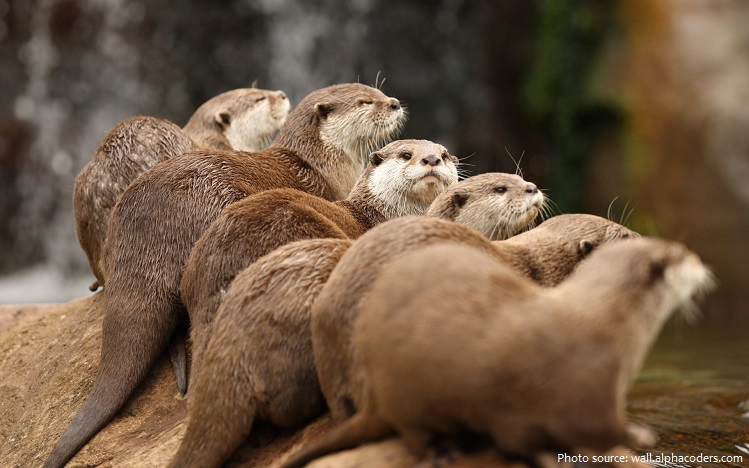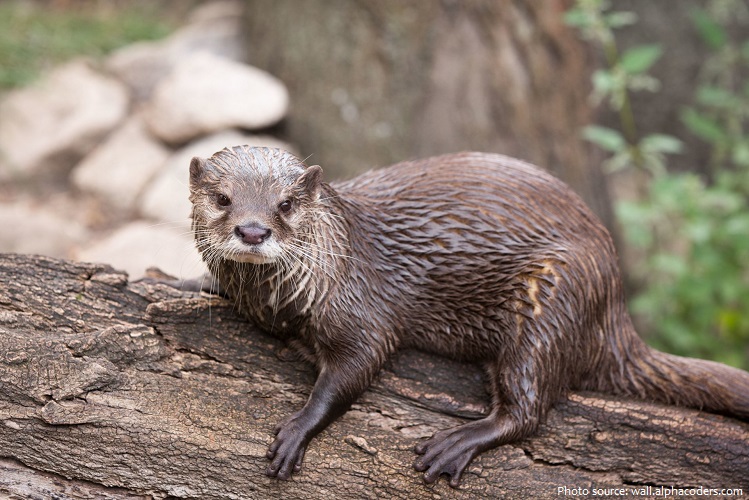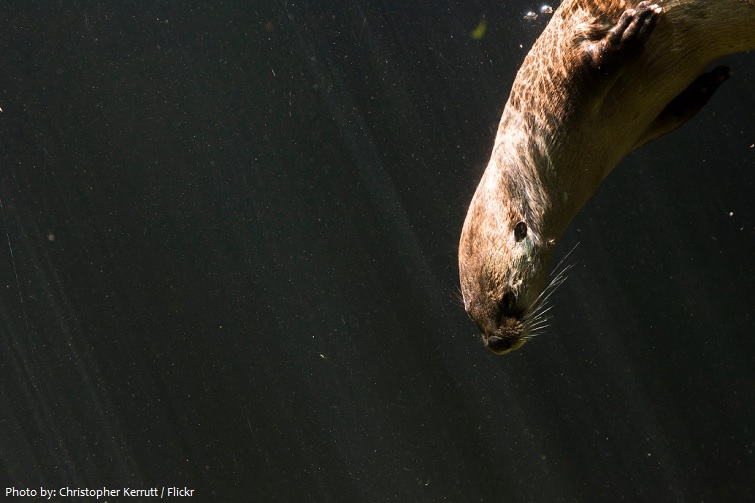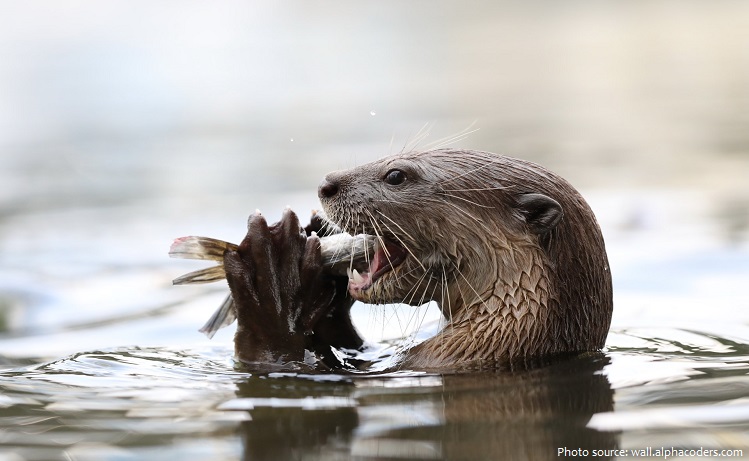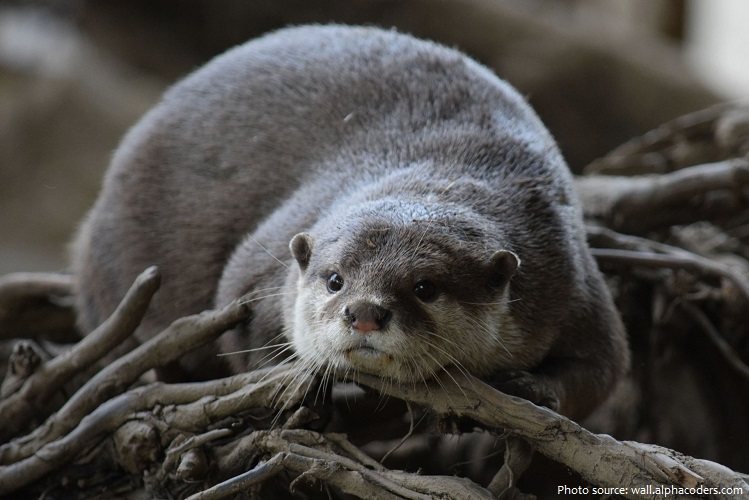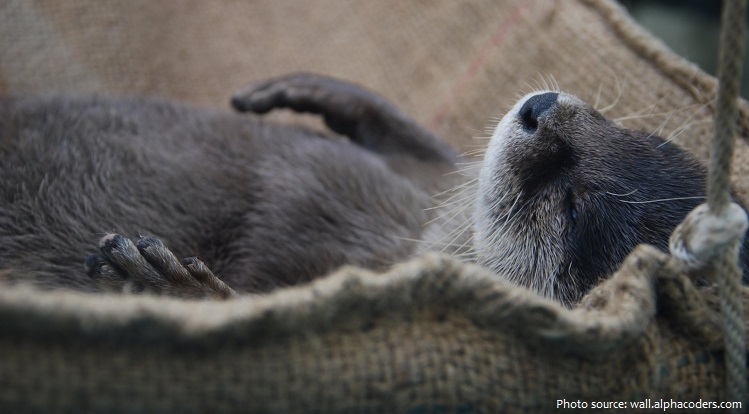The North American river otter, also known as the northern river otter or the common otter, is a species of otter.
It is found throughout North America, inhabiting inland waterways and coastal areas in Canada, the Pacific Northwest, the Atlantic states, and the Gulf of Mexico.
North American river otters live in freshwater and coastal marine habitats including rivers, lakes, marshes, swamps, and estuaries.
They can tolerate a great range of temperature and elevations.
The average lifespan for North American river otters is from 8 to 9 years in the wild, while in captivity individuals may live up to 25 years.
The North American river otter’s body length ranges from 66 to 107 centimetres (26 to 42 in). It weigh from 8.5 to 12 kg (19 to 26 lbs).
North American river otters have long, streamlined bodies, thick tapered tails, and short legs.
They have wide, rounded heads, small ears, and nostrils that can be closed underwater.
The vibrissae are long and thick, reflecting their importance in sensory perception. They are used extensively in hunting, as smell, vision, and hearing are diminished in the water.
The toes are fully webbed, and the tail (one-third of body length) is tapered.
The river otter is protected and insulated by a thick, water-repellent coat of fur. The fur is dark brown to almost black above and a lighter color ventrally. The throat and cheeks are usually a golden brown
The North American river otter is one of the most playful, curious, and active species of otter.
North American river otters are excellent swimmers and divers, able to stay underwater for up to 8 minutes.
They are also fast on land, capable of running at up to 30 km/h (19 miles).
North American river otters are highly mobile and have the capacity of traveling up to 42 km (26 mi) in one day.
These otters are active year-round, and are most active at night and during crepuscular hours. They become much more nocturnal in the spring, summer, and fall seasons, and more diurnal during winter.
North American river otters eat mainly aquatic organisms such as amphibians, fish, turtles, crayfish, crabs, and other invertebrates. Birds, their eggs, and small terrestrial mammals are also eaten on occasion. They sometimes eat aquatic plants.
The North American river otter use a wide range of vocalizations, including whistles and buzzes to twitters, staccato chuckles, chirps and growls.
North American river otters build dens in the burrows of other mammals, in natural hollows, such as under a log, or in river banks. Dens have underwater entrances and a tunnel leading to a nest chamber that is lined with leaves, grass, moss, bark, and hair.
They live alone or in family groups, typically females and their young.
Males and females come together to breed in late winter or early spring. Gestation lasts two months, but the young may be born up to a year after mating because these otters employ delayed implantation. They are born with fur, but are otherwise helpless. They open their eyes at one month of age and are weaned at about 3 months old. They begin to leave their natal range at from 6 months to a year old. Juvenile otters usually remain with the female until she bears her next litter the following spring.
North American river otters are sometimes taken by bobcats, coyotes, birds of prey, alligators, and other large predators. They mainly escape predation through their agility in the water and on land, their vigilance, and their ability to fiercely defend themselves and their young.
They have become a popular exhibit in zoos and aquaria, but unwelcome on agricultural land because they alter river banks for their access, sliding, and defense.
North American river otters seem to be sensitive to pollution and disappear from areas with polluted waters.
Some jurisdictions have made otters a protected species in some areas, and some places have otter sanctuaries. These sanctuaries help ill and injured otters to recover.
